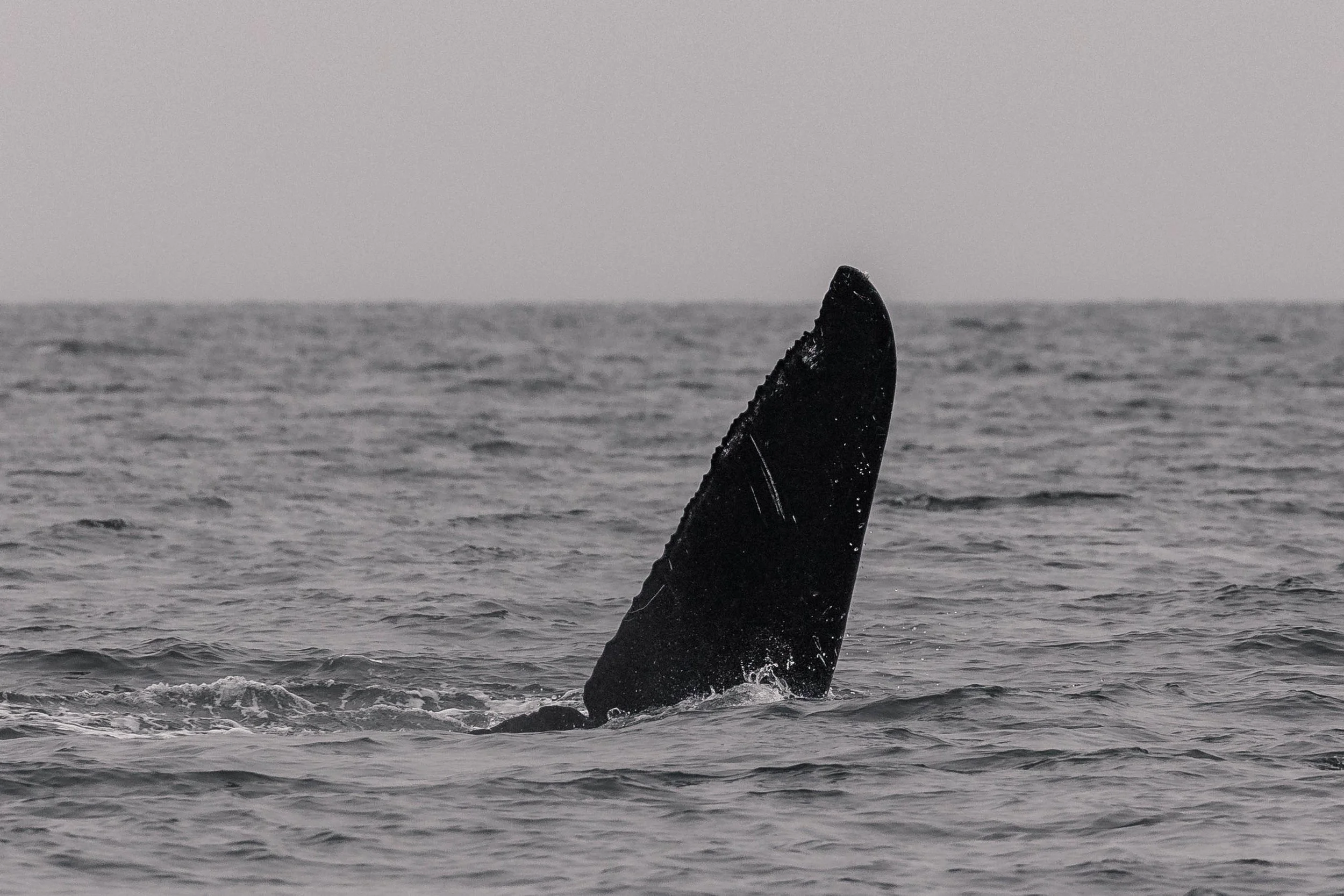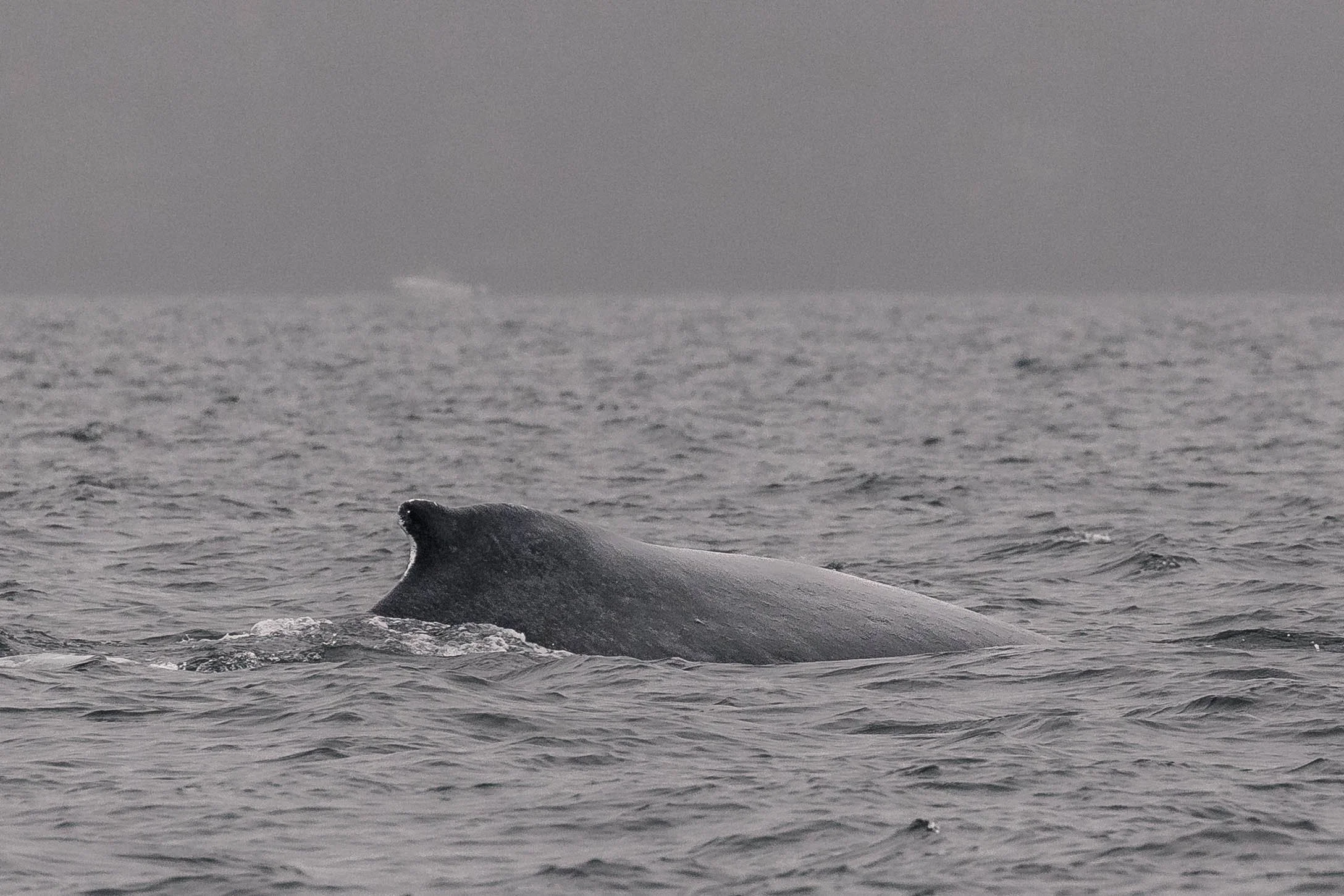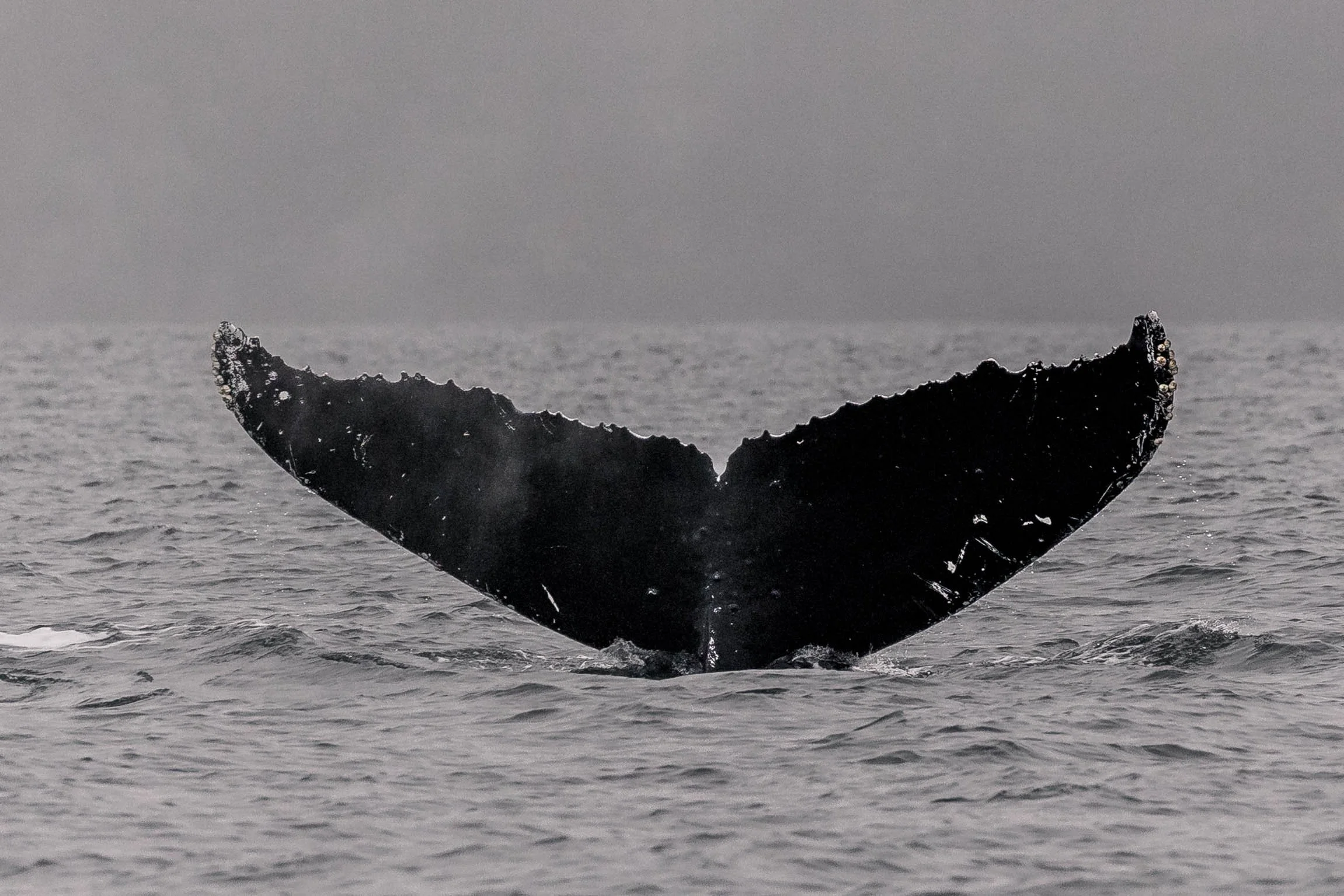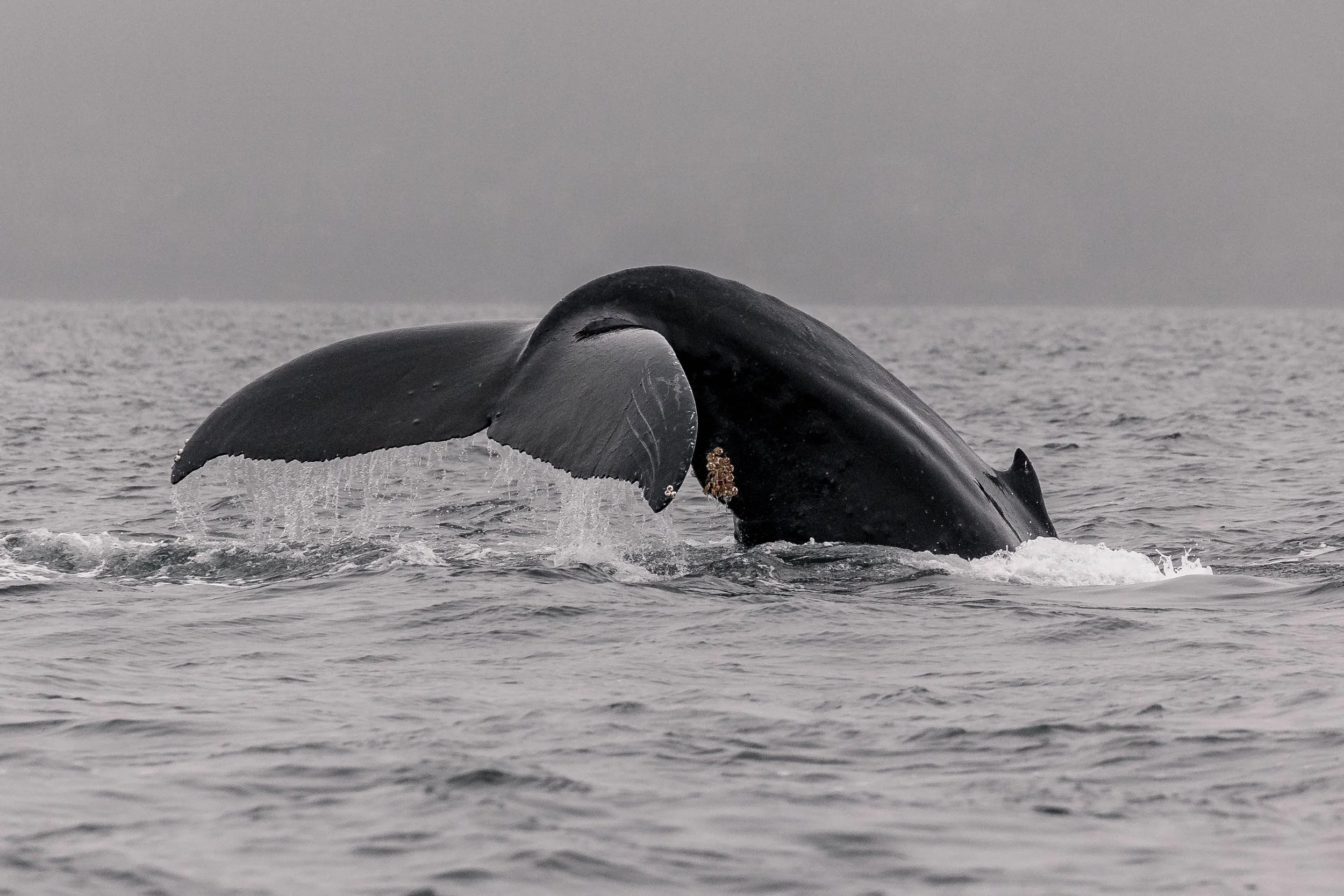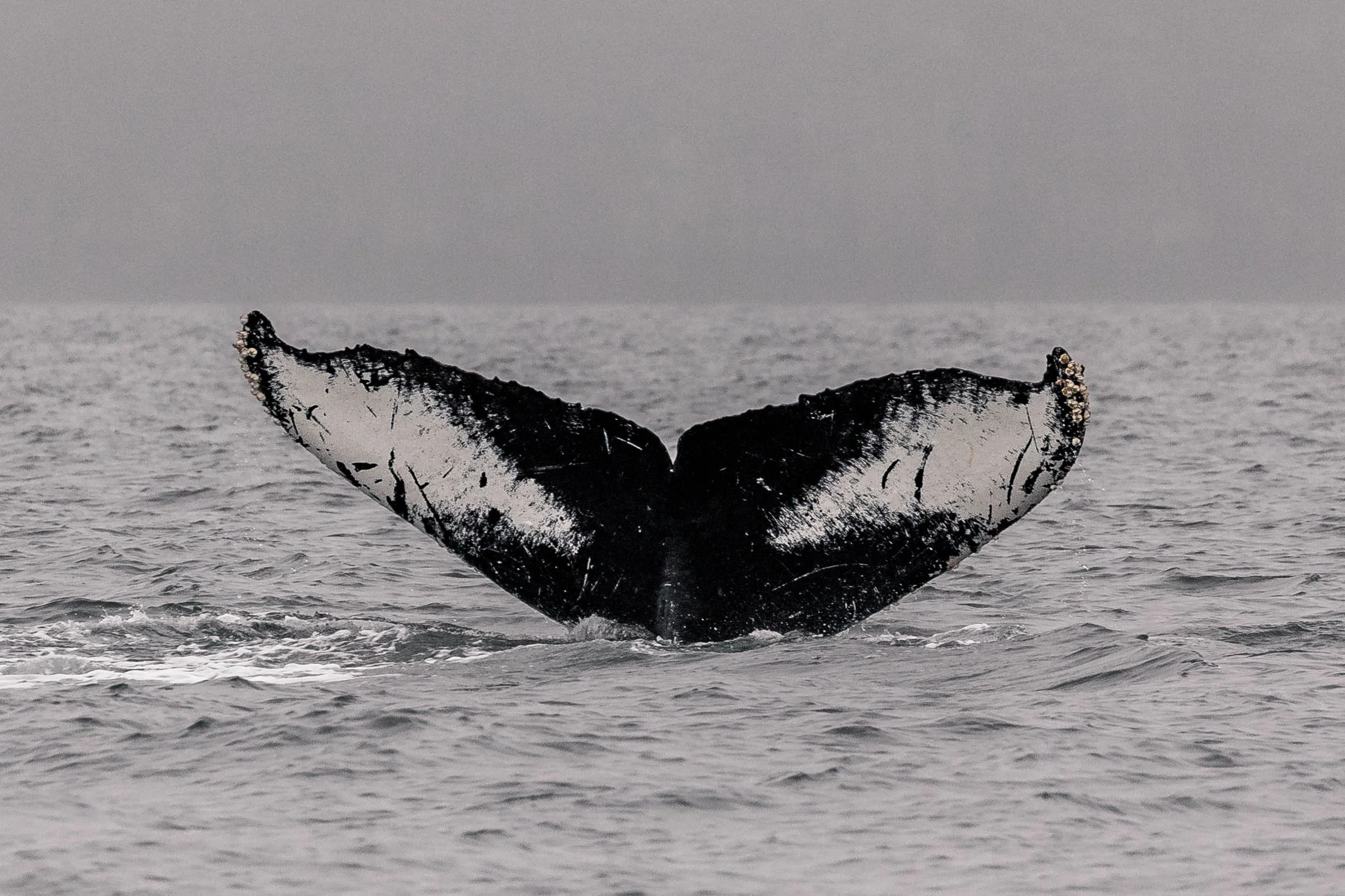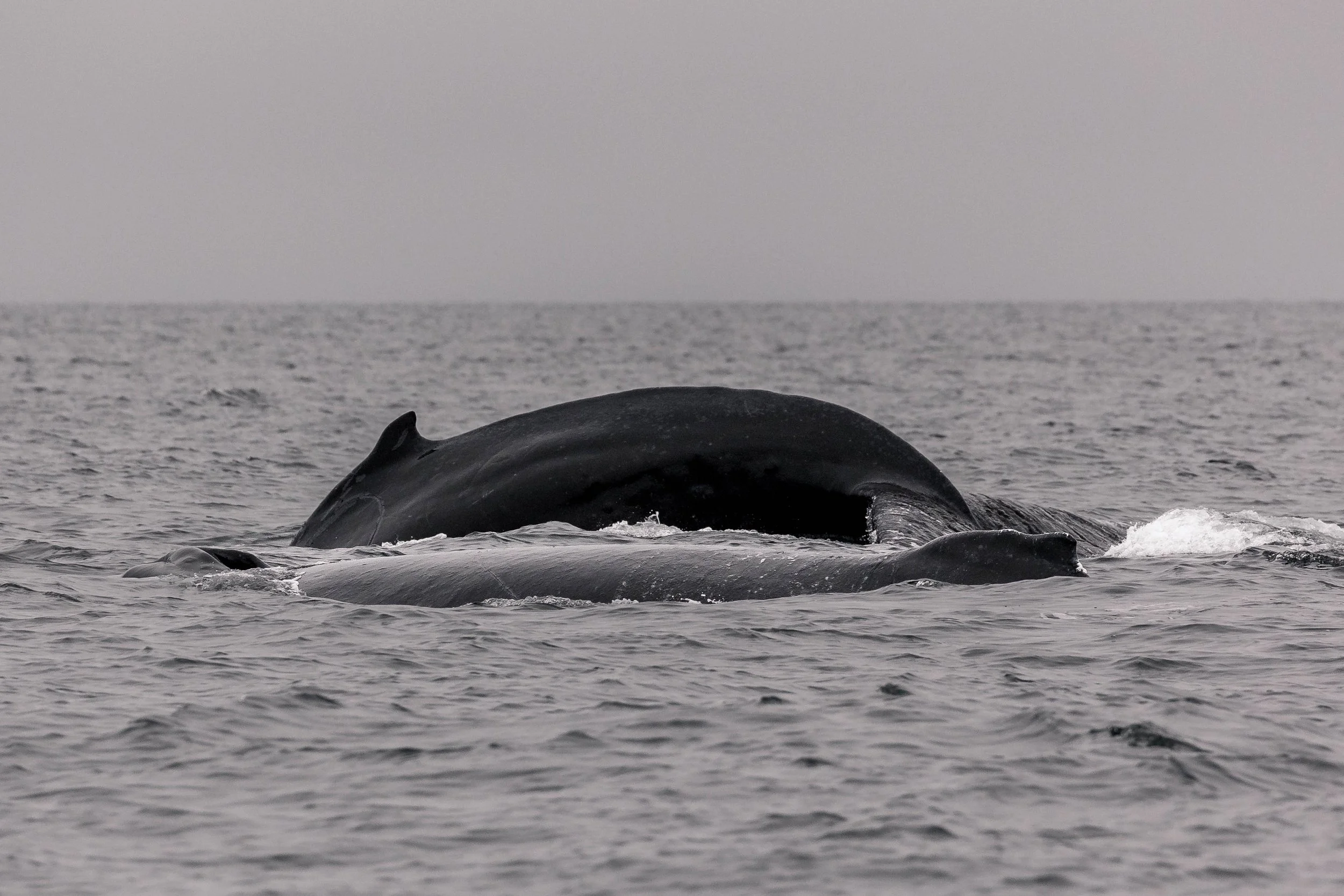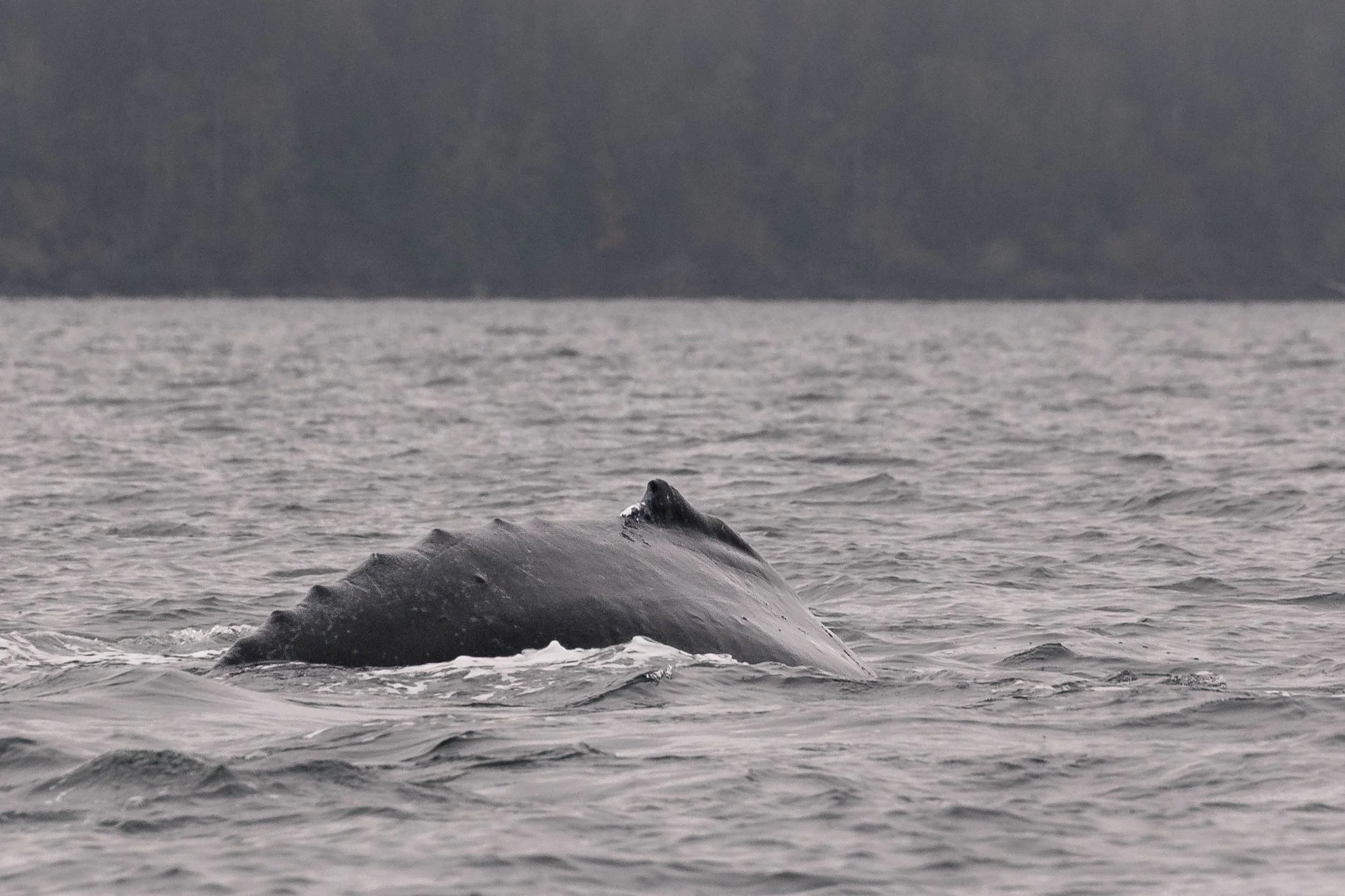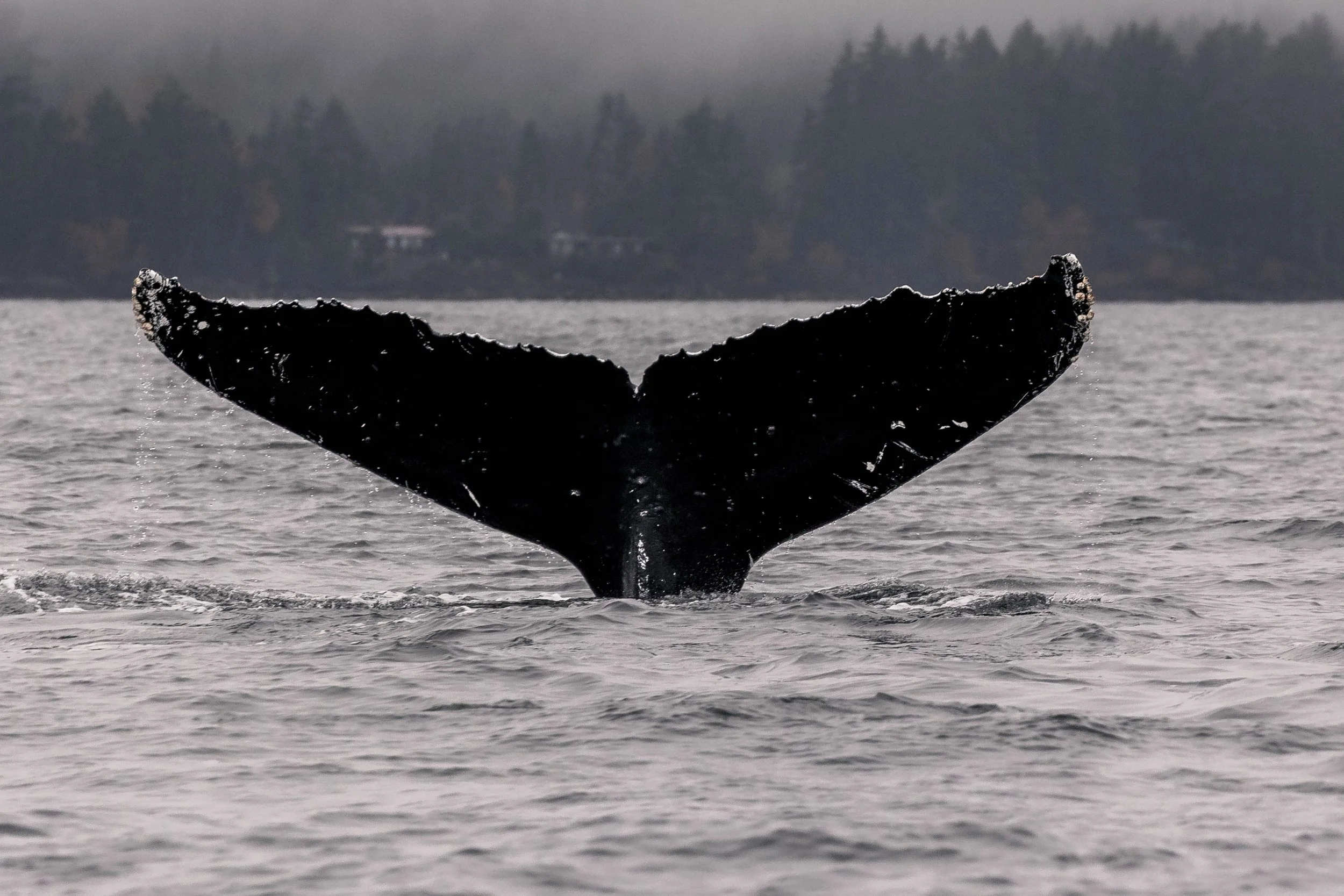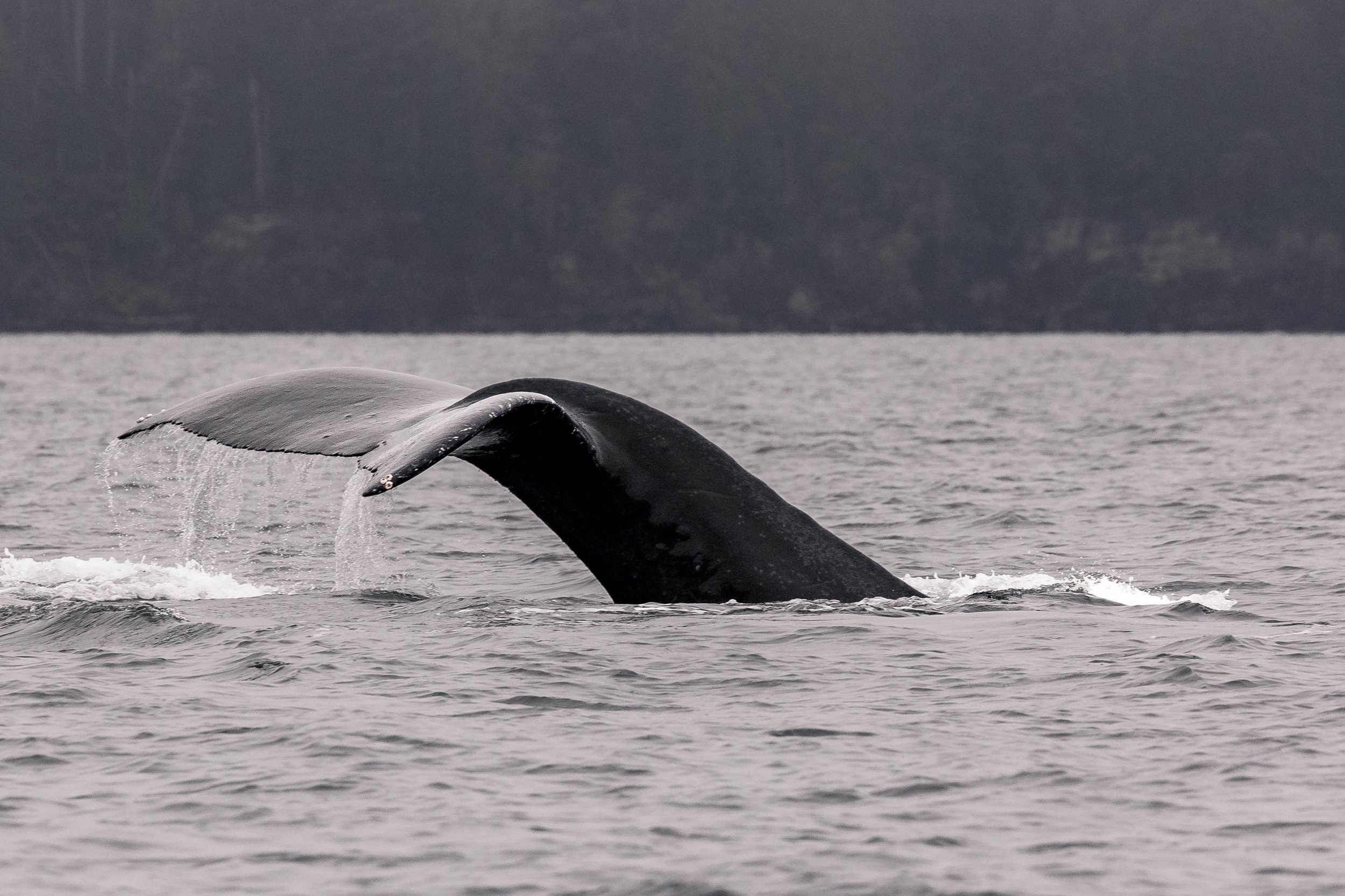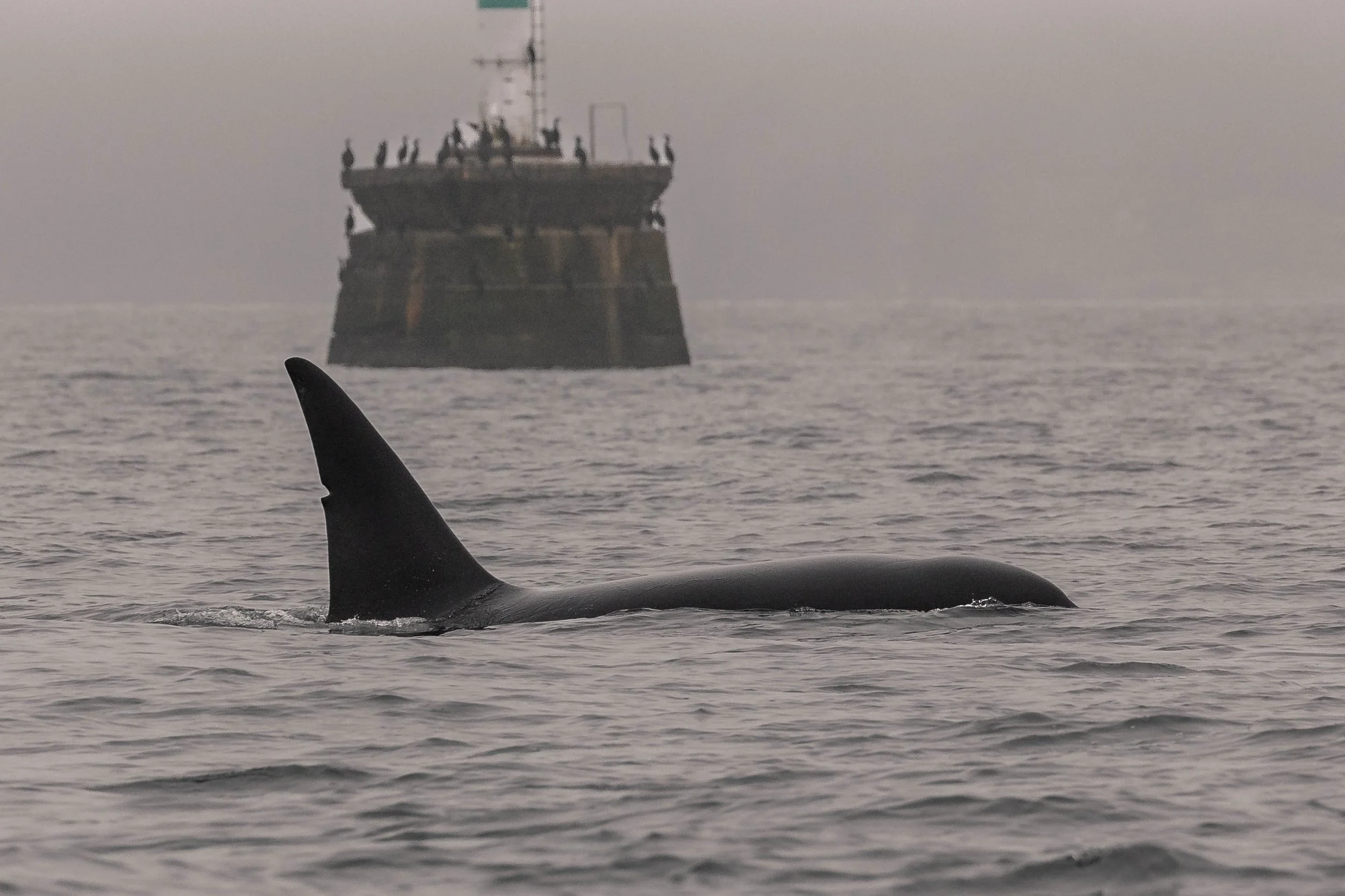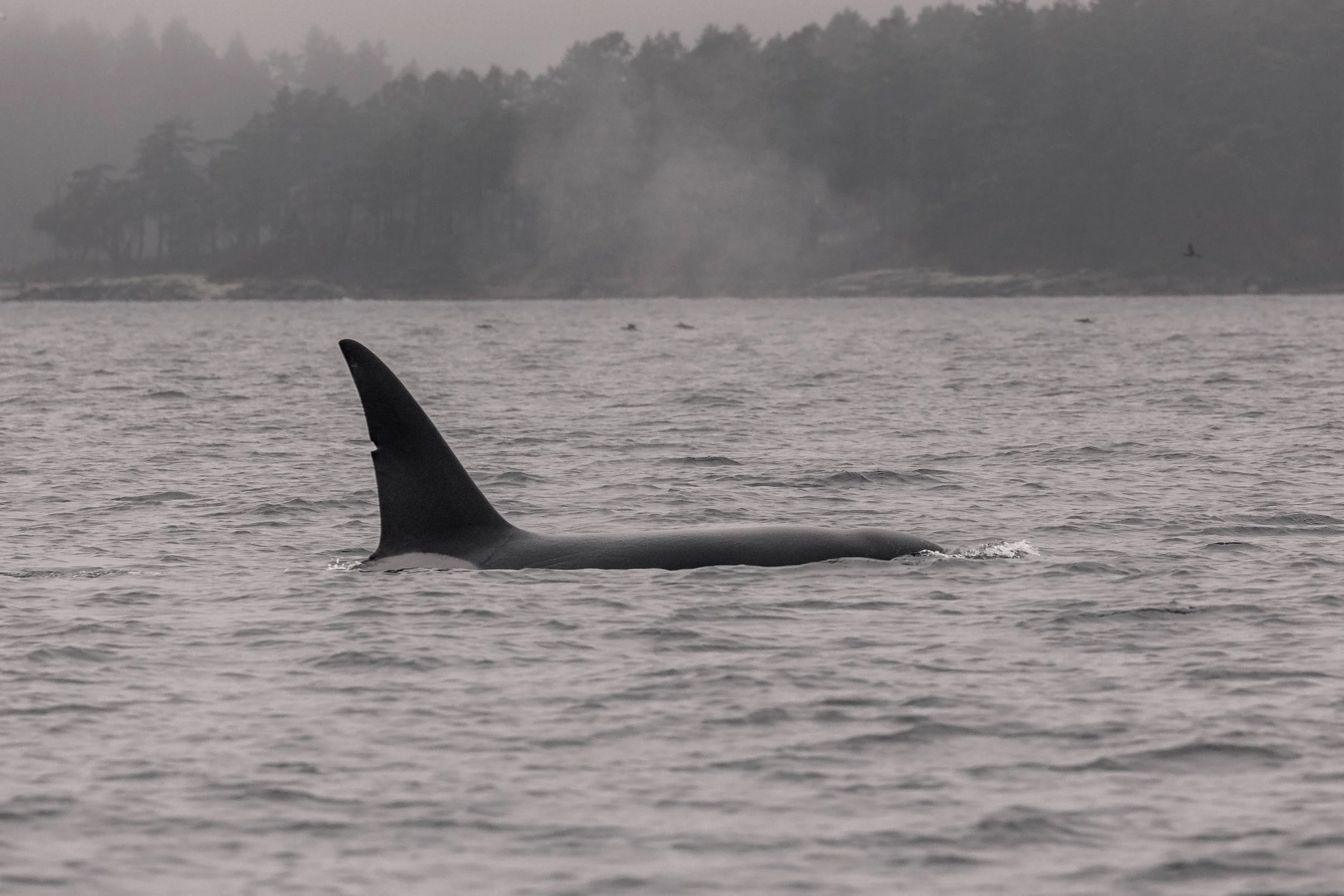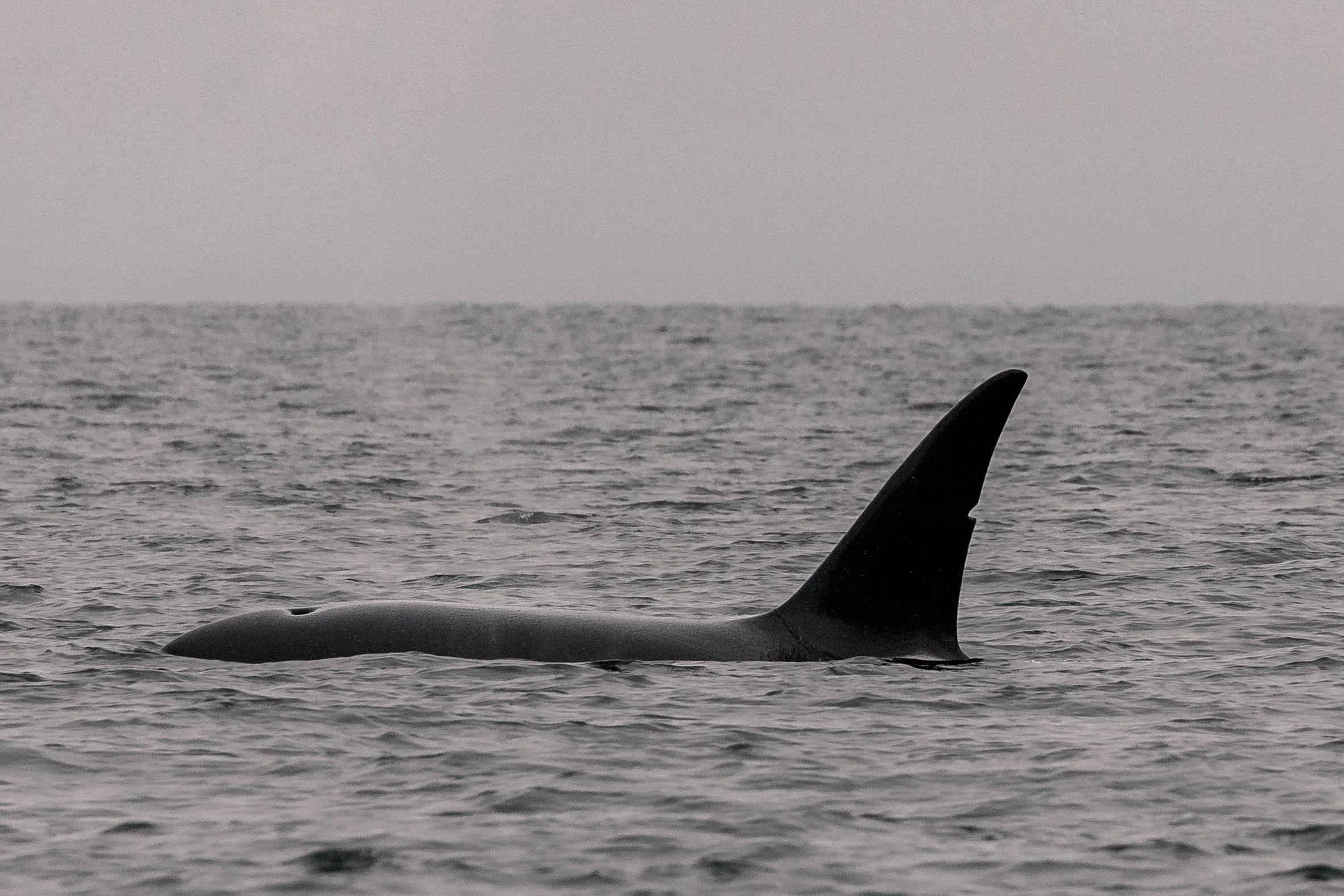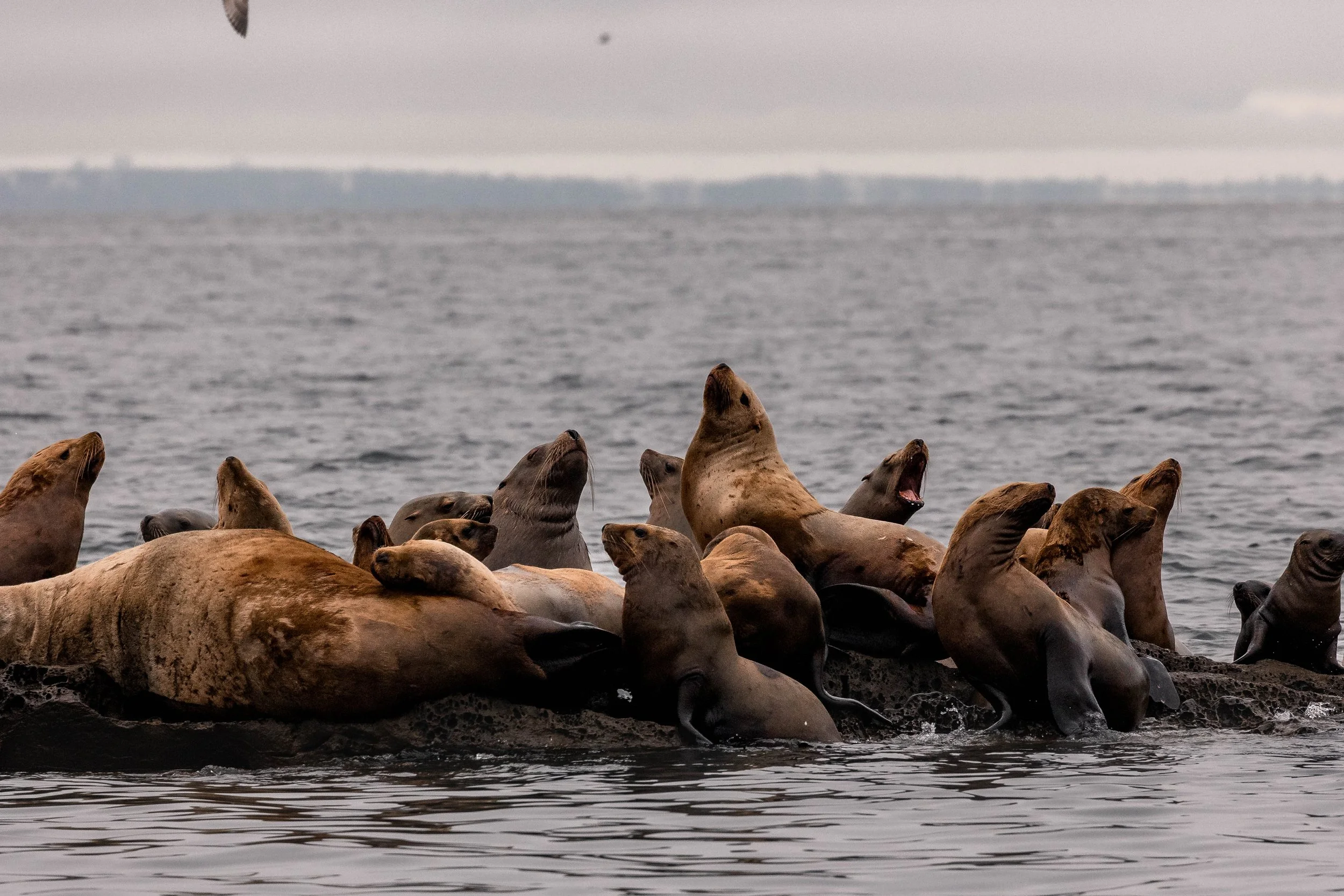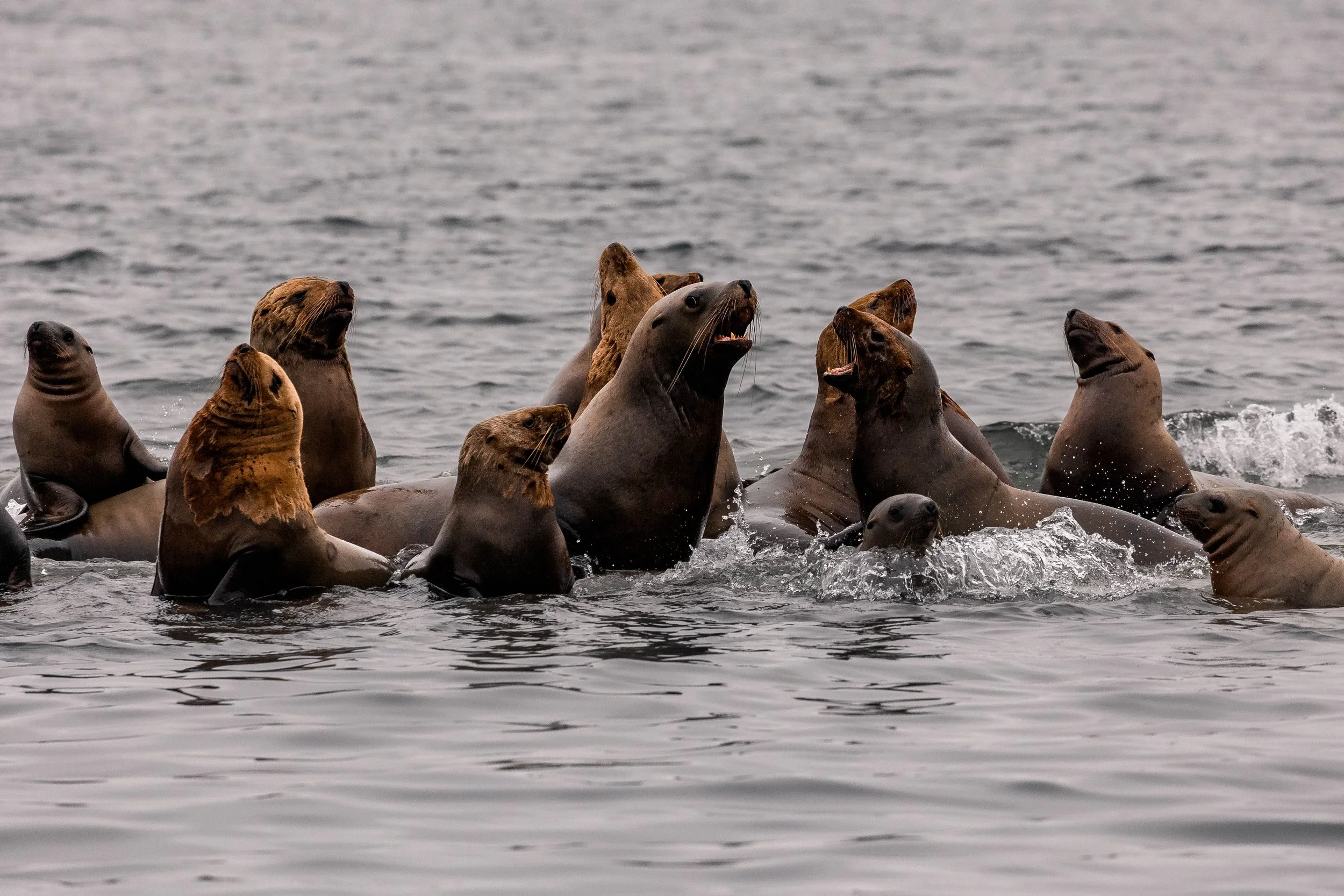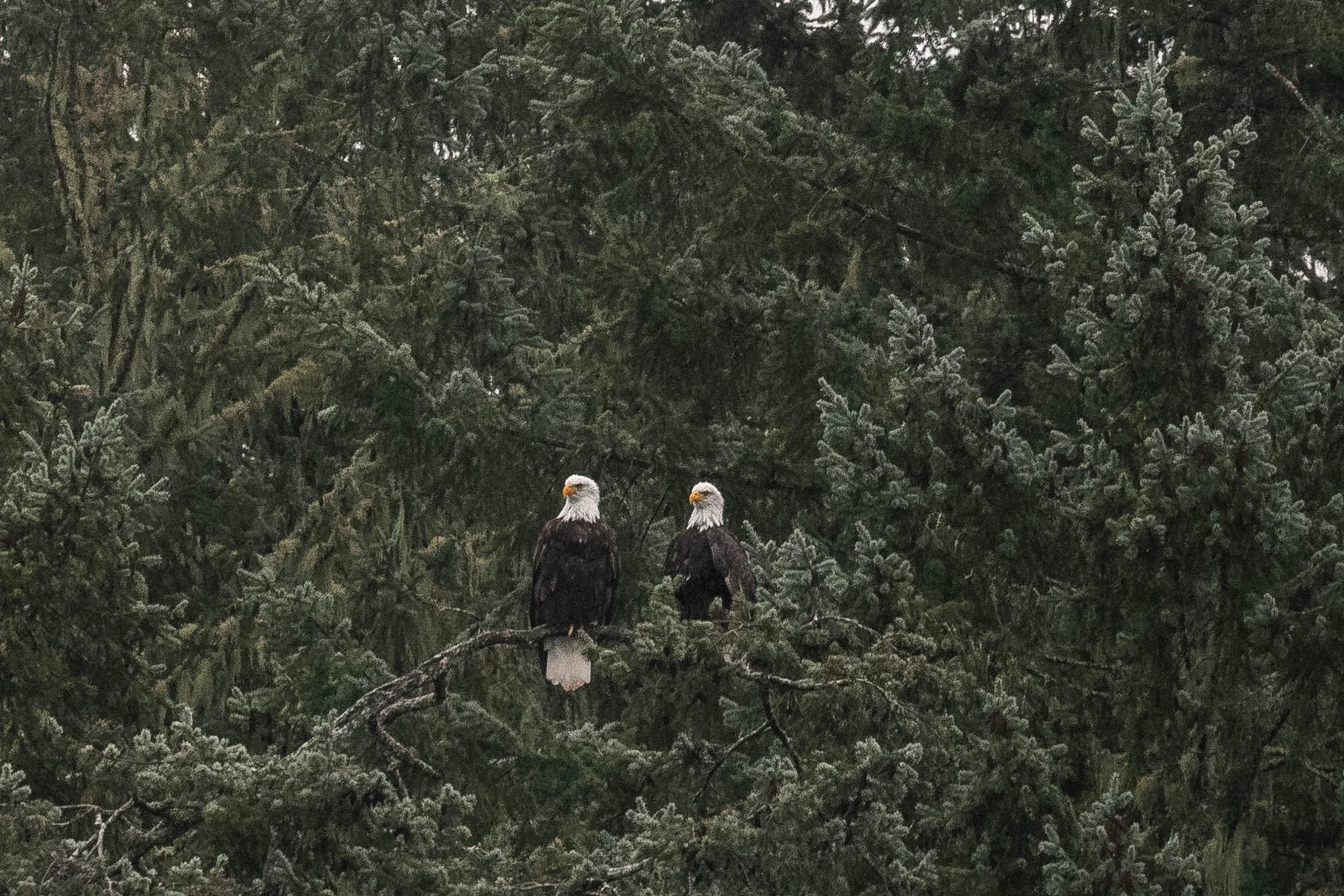November 15, 2025 - A trio of humpbacks, followed by a trio of orca
Cool, fog-filled skies greeted us as we began our adventure aboard our semi-covered vessel, Kula. This perfectly West Coast-day didn’t dampen our spirits, though, as we eagerly began peering around, searching for flukes, fins, or blows as we departed. Our adventures took us north as we searched around Gabriola Island’s shores and into the Strait of Georgia.
After a bit of searching, we found what we had been looking for - several large flukes were rising high into the air. We had found a trio of humpbacks travelling together!
Once we were on scene, the next challenge began - identifying which whales we were with. Thankfully, all three of these whales were highly cooperative, and we soon captured photos of each of their flukes. The underside of a humpback’s flukes, or its tail, is a unique pattern of pigmentation, scars, scratches, lumps and bumps that is used as the primary identification method for this species. After taking these photos, we confirmed that the whales were Tempest (BCX0837), Graphite (BCX2077), and Kraken/Monarch/Pyramid (BCZ0180).
Thanks to Happywhale, we have learned that Tempest and Kraken both travel to the Mexico breeding grounds. While Graphite has still not been cross-matched to a breeding ground, their sibling Malachite (BCY1463) has been matched to the Mexico breeding grounds. Typically, a humpback will return to whichever breeding grounds their mothers taught them about in their first year of life. With this in mind, Graphite likely travels to the Mexico breeding grounds as well, meaning all three of these whales may have met and interacted with each other previously down south!
These three were travelling along close together, occasionally fluking as they went. At this point, we are quite late in the feeding season, and these three will likely be departing our waters soon to undertake the many thousands of kilometres' trek to Mexico. Right now, they will be focused on getting their last few days of feeding in, eating as much as they can and packing on the pounds to sustain themselves until they return to our bountiful waters next season.
After travelling with the trio for a bit, we turned and began leaving, eager to see what else the day had in store for us. We didn’t have to search for long, though, as we soon found a trio of black fins cutting through the water 20 minutes away from our humpbacks. This time, we had found a pod of Transient orca! Once more, our onboard Naturalist began snapping photos to identify who they were with. Unlike with humpbacks, orcas are almost exclusively identified from their saddle patches and dorsal fins, and rarely are identified by their flukes. After comparing photos, we discovered we were with the T037A matriline, consisting of 3 currently present members:
T037A Volker ♀ (1994)
T037A2 Inky ♂ (2009)
T037A4 Crinkle ♀ (2015)
The T037A matriline is a somewhat unusual family. Volker’s eldest daughter, T037A1 Inyo ♀ (2007), has been travelling away from the family for many years. This isn’t too uncommon - once the pod gets to the larger side (~6+ members), the eldest daughter may head out and begin her own matriline away from the pod. After her dispersal, the remaining family members travelled together, totalling five individuals. This changed again in 2024 however, when the youngest family member, T037A5 Jib ♂ (2019), disappeared and sadly is now presumed deceased. The middle child of the pod, T037A3 Spinnaker ♂ (2013), soon dispersed himself and has often been seen mingling with other pods since he departed. Males are much less likely to disperse than females, and are widely considered to be huge “momma’s boys”, dedicating most of their lives to sticking by their mother’s side. Spinnaker’s departure has left the pod on the smaller side, now consisting of two females (one of which is still a juvenile) and one young male. While we may never know why Spinnaker left the family for his own adventures, we wish him all the best and hope to see him by their side again in the future!
While observing the T037As today, it was noted that the females (Volker and her daughter Crinkle) left Inky’s side and began travelling further out soon after we arrived. Inky seemed unenthused by this plan, though, and suddenly, he changed direction and started approaching Kula! When a whale changes course and begins travelling towards our boats, we shut down and sit calmly in the water until they have given us our space again. This behaviour is known as ‘mugging’ - many of our whales are curious by nature, and sometimes they want to examine us as much as we are looking at them. This behaviour is never encouraged, as it can pose safety risks to the animals (approaching boats could lead to them getting significantly hurt or worse) and boaters. After a bit of peeking around, Inky headed out, and once he was a safe distance away, we started up again and soon began departing for the next exciting stop on the journey.
We said our goodbyes to Inky and his family and continued our trip southbound, over to a well-known pinniped haulout known as Stinky Rocks. Pinnipeds, or fin-footed mammals, tend to congregate together in areas that are relatively flat and isolated. These areas are the perfect place to rest and recuperate after braving the dangers of the seas for many hours at a time. Not all haulouts are equal, though, and depending on their height, they may become submerged during high tides. While Stinky Rocks rarely becomes completely submerged, when we made our way over to it today, it was clear there wasn’t much space for the large sea lions to sprawl out on. Many of them had fins dipped into the waters, with a few sitting in the shallows with just their heads and chests poking out. When there is competition for the best spots to rest, fighting may break out, and that’s precisely what happened today. Sea lions are boisterous, and there was much grumbling, growling, and snapping at each other as they fought for a good ‘nap’ spot.
Near the end of our journey, another exciting wildlife species was spotted - a pair of Bald Eagles was perched high up in the trees, side-by-side. These two are likely a bonded pair. Bald Eagles are a monogamous species, and usually bond for life with their chosen partner. These pairs travel huge distances to return to their same breeding areas year after year, and often use the same nest every season as well. Because of this, every season these nests get bigger and bigger, and sometimes they can reach an impressive 5 to 6 feet (1.5-1.8 meters) in diameter!
We wrapped up our trip and began heading back into the harbour, concluding a beautiful day exploring the Salish Sea, and learning about the many inhabitants of the area!
Please enjoy these photos taken by Marine Naturalist Desarae Poier!
Graphite fluking in the fog.
Graphite’s dorsal fin, heavily scarred.
The corner of Graphite’s fluke, with his dinstiguishable scratches visible.
Tempest’s dorsal fin.
Tempest’s fluke.
Graphite arching high and beginning to dive.
Graphite’s fluke.
Kraken’s fluke.
Graphite beginning to dive, with Kraken beside them.
Graphite fluking beside Kraken.
Graphite’s dorsal fin, with his scarring clearly visible.
Kraken’s knuckle-y dorsal fin/back.
Tempest fluking.
A beautiful fluke waterfall.
T037A4 Crinkle travelling.
Matriarch T037A Volker with T037A4 Crinkle behind her.
T037A2 Inky with te Thrasher Rock marker behind him.
T037A2 Inky - he’s getting so big!
T037A Volker with her daughter T037A4 Crinkle (tip of dorsal fin).
T037A2 Inky travelling along.
T037A2 Inky.
A different angle - the rear view of T037A2 Inky’s dorsal fin.
Surf Scoters floating by.
Sleepy Steller Sea Lions hauled out.
Fighting amongst the sea lions.
A pair of Bald Eagles.



